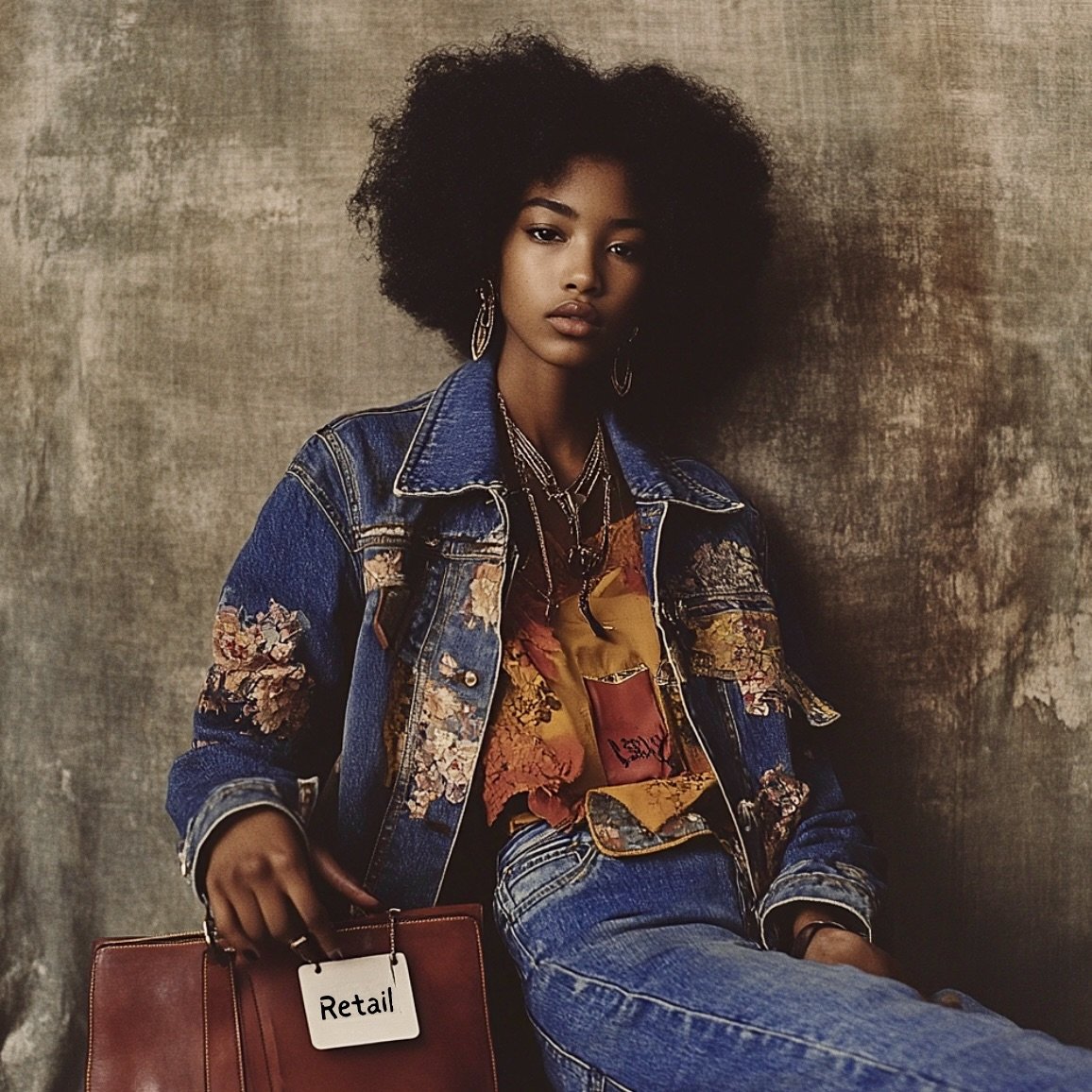Secondhand Style, First-Class Business.
How Resale Fashion is Shaping the Future of the Industry.
Once upon a time, secondhand fashion was tucked into the corners of thrift shops, often misunderstood and occasionally stigmatized. Fast forward to 2025, and it's at the center of a $100 billion global movement—grabbing headlines, red carpets, and serious investor attention. Driven by Gen Z's eco-conscious mindset, a shaky economy, and a craving for one-of-a-kind style, the resale boom is rewriting the rules of fashion commerce.
But beneath the surface of this meteoric rise lies a more complicated story: rapid growth, yes—but elusive profits.
The Resale Boom: What the Numbers Say
The secondhand fashion industry is no longer a niche; it’s a force. According to The Economist, the market is set to hit $100 billion in 2025, a massive leap from the estimated $30–40 billion in 2020 (The Economist). Other reports, like Cognitive Market Research, suggest an even higher figure—$152.5 billion in 2023—while ThredUp and GlobalData project it could climb to $350 billion by 2028 (ESG News).
Secondhand Apparel Market Size Estimates by Source (2020-2018). Market estimates from multiple sources show the explosive growth of the secondhand apparel industry, with projections ranging from $100B in 2025 (The Economist) to $350B by 2028 (ThredUp & GlobalData). Cognitive Market Research reports the market already reached $152.5B in 2023, underscoring resale’s rapid ascent as a dominant force in global fashion.
While definitions vary (some include accessories, others don’t), the takeaway is clear: secondhand is no longer second best.
Digital platforms like ThredUp, Depop, Poshmark, and Vestiaire Collective have played a major role in this shift, making it frictionless for users to resell or snag pre-loved finds. On top of that, secondhand fashion is getting a lot of attention; it's been featured on runways at London Fashion Week and even showed up on popular shows like Emily in Paris. It's clear this isn't just a trend; it’s a full-blown fashion movement.
Why It’s Hot: Values, Wallets, and Vibes
The appeal goes beyond aesthetics. For younger shoppers, wearing secondhand is both a style choice and a statement. Sustainability is a top concern, especially when fashion contributes roughly 10% of global carbon emissions (Fashion Revolution). Buying resale is a tangible way to reduce waste, reuse resources, and push back against the throwaway culture of fast fashion.
But let’s not forget affordability. In the midst of inflation and rising living costs, secondhand fashion offers high-quality garments without the high-end price tag. It’s smart shopping with soul.
And of course, there’s the treasure hunt. Whether it’s a vintage ‘90s tee or a designer bag with a past life, resale fashion offers something fast fashion can’t: uniqueness. The dopamine hit of discovering a rare piece has become a defining aspect of this generation’s shopping culture.
The Reality Check: Growth ≠ Profit
Here’s where things get tricky. Despite record-breaking market size, resale platforms are struggling to turn that popularity into profits.
Authentication, cleaning, photographing, storing, and shipping individual items? That’s an expensive, labor-heavy process. Return rates are high. Competition is intense. And unlike traditional retailers, resale companies don’t control inventory, they manage it. That limits scalability.
Take The RealReal, for example, its Q4 2023 revenue dropped 10% to $143 million (Retail Dive), but the company still made a small profit by focusing on selling higher-end items and cutting costs. Poshmark, acquired by Naver for $1.2 billion in 2022, brought in $262 million in revenue last year (Zippia), though it has not publicly confirmed profitability. Meanwhile, ThredUp hit record revenue of $322 million in 2023 and says it expects to break even by the end of 2024 (ThredUp).
These examples show that even with strong sales, turning a real profit isn’t easy, though some platforms are starting to make progress.
These glimmers of progress are encouraging, but investors remain skeptical. As The Economist put it in a recent X post, “growth is sexy—but profit is seductive.”
How Resale Platforms Are Pivoting
To shift gears from scale to sustainability (in a business sense), resale platforms are getting creative:
ThredUp is betting big on its Resale-as-a-Service (RAAS) model, partnering with brands to handle their resale logistics. With 11 new RAAS partners added in Q2 2023 alone, this B2B play is helping stabilize revenue and cut costs (Glossy).
The RealReal has tightened its commission structure, pushed high-end consignment, and introduced fees for less profitable sellers. Their goal? Focus on fewer, more valuable transactions rather than a volume game.
Poshmark continues to lean into community building, fostering loyalty and repeat business through seller-buyer interaction, and by creating a shopping platform that feels more like a social network than a traditional store.
In other words: tech upgrades, tighter operations, and smarter curation are the name of the game.
What’s Next: The Secondhand Tipping Point
The road ahead looks promising, but it's far from smooth. As the market matures, expect to see:
Consolidation: Smaller resale players may get scooped up by bigger platforms, or struggle to survive independently.
Tech Innovation: From AI-driven pricing to automated authentication, efficiency will become make-or-break.
Retail Hybrids: Traditional brands are jumping in (see Levi’s and Patagonia resale programs) blurring the line between first and secondhand.
Cultural Cementing: With more influencers, celebrities, and events embracing pre-loved fashion, the stigma of “used clothes” continues to dissolve.
At its core, secondhand fashion is about more than circularity; it’s about a cultural reset. As consumers grow weary of overconsumption and look for meaningful alternatives, the business of resale fashion sits at the intersection of ethics, economy, and expression.
And while profitability might still be a moving target, one thing’s clear: the secondhand market isn’t just booming; it’s transforming fashion from the inside out.
Related Posts




